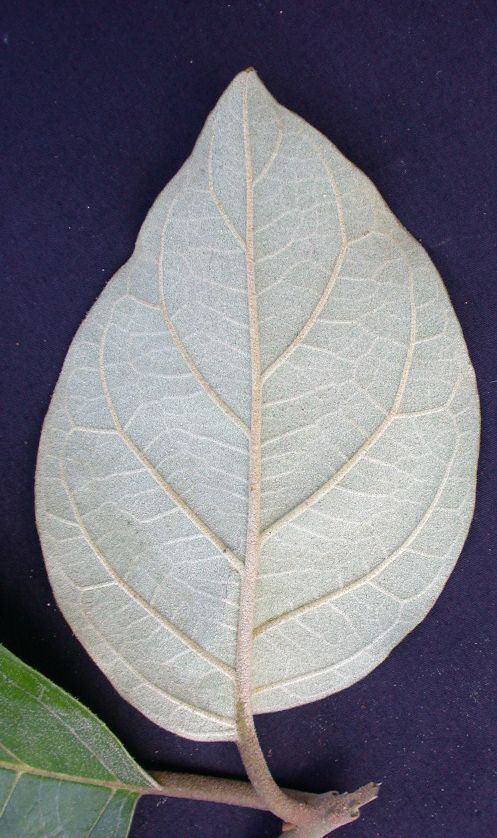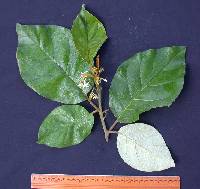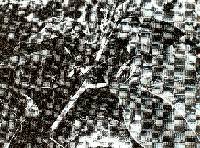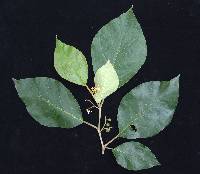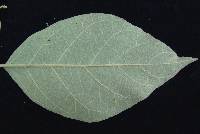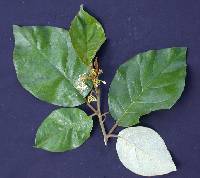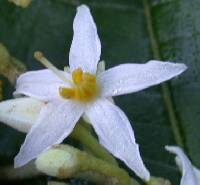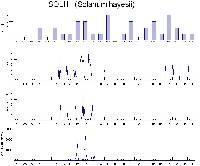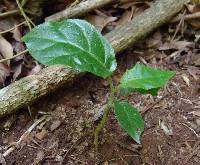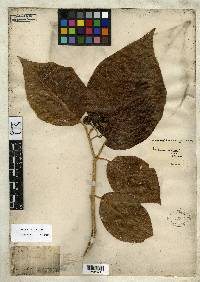
Neotropical Flora
|
Family: Solanaceae
|
Shrub or tree, to 12 m tall; trunk usually armed with prickles; bark smooth; wood soft; stems densely matted with sessile stellate trichomes, usually unarmed except on juveniles. Leaves alternate; petioles 1.5-4.5 (6) cm long; blades ovate, abruptly acuminate, obtuse to rounded and inequilateral at base, 11-29 cm long, 6-17 cm wide, shiny and glabrous to sparsely stellate-pubescent above (especially on younger leaves), very densely pubescent below with stalked stellate trichomes; juvenile plants with the petioles armed, the leaves lobed, to 42 cm long and 30 cm wide. Inflorescences of usually once-branched, indeterminate racemes on stems below upper leaves, to 6 cm long (longer in fruit); flowers 5-parted, white, densely stellate-tomentose, to 2 cm wide; calyx 3-4 mm long, the lobes +/- truncate and mucronate at apex; corolla deeply lobed, ca 1 cm long; stamens yellow; filaments thick, fused to tube; anthers 3-4.5 mm long, with both terminal pores and longitudinal slits; pollen shed while style short; style thick, to 2 mm long, elongating to 7 mm. Berries globose, to 13 mm diam, yellow at maturity; seeds many, +/- ovoid, ca 3 mm long. Croat 7706. Frequent in the forest; rare along the shore. Flowers throughout much of the year; known to flower from September to May, mostly from November to May. The fruits apparently require several months to mature, but mature fruits may be found on trees that are still flowering during the dry season. Trees in the species bear flowers all of one type, either short-styled or long-styled. The short styles are 2 mm long, held well beneath the anthers. The long styles first equal the height of the anthers, then lengthen to 7 mm, well above the anthers. Pollen is ready to shed at anthesis, and the stigma is apparently receptive at the same time. Nicaragua to Peru. In Panama, known from tropical moist forest in the Canal Zone and Bocas del Toro, from premontane wet forest in Colón, Coclé, and Panama, from tropical wet forest in Colón, and Coclé, and from premontane rain forest in Panama. |
|
|
|
Powered by Symbiota.

